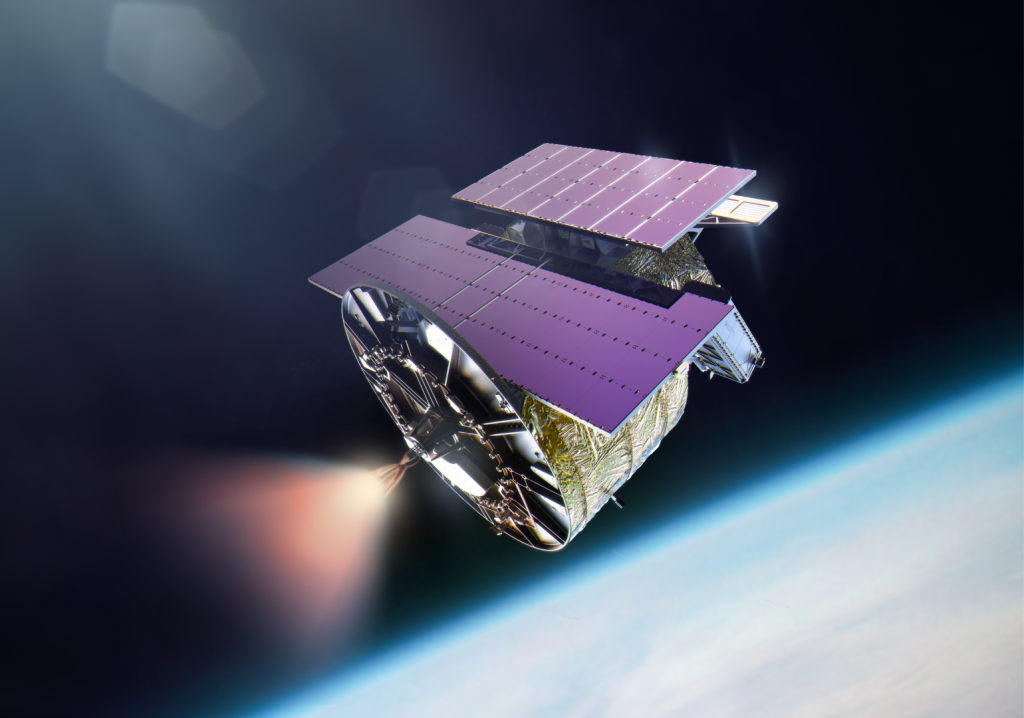As space lanes become increasingly crowded and more satellites malfunction, this service satellite will navigate across orbits to get them back up and running.
The space race 2.0 is underway, with the world’s top powers all vying for a piece of the cosmic pie.
The number of active (or operational) satellites in space has more than doubled in five years, jumping from 3000 to 8700, with exponential growth expected within the next half decade, according to Xavier Orr, CEO of Navigation and Robotics Technology company Advanced Navigation.
“It’s predicted [the world will] have 50,000 satellites in space by 2028,” Orr told create. “There’s a renewed interest in interplanetary missions, such as the NASA Moon to Mars Architecture program, where we’ll be landing on the moon for the first time in 30 years, then [venturing] to Mars.”
With any burgeoning industry, sustainability and maintenance of assets needs to factor into the equation – which is an innovative quest in and of itself.
In this pursuit, the Australian aerospace organisation Space Machines Company has just launched an orbital service vehicle called Optimus to conduct orbitside assistance for other satellites, à la the NRMA, RACQ or RACV.
Described by Space Machines Founder and CEO Rajat Kulshrestha as a “space taxi” and “roadside assistance” in orbit, Optimus will both shuttle satellites between orbits and perform essential services such as repairing, refuelling and upgrading space infrastructure.
“Similar to when a vehicle breaks down on the road, we want to be the on-call provider for space vehicles and satellites,” Kulshrestha explained on the Advanced Navigation website.
The satellite’s navigational nerve centre, Boreas X90 – developed by Advanced Navigation – is the world’s first digital fibre optic gyroscope.
“We’ve sold many thousands of these systems for land, aerospace, farming and maritime applications,” Orr said. “But this is the first time we’re doing a space application with the technology.”
Orbital leaps and bounds
Boreas X90 is a space-grade Digital Fiber Optic Gyroscope (DFOG) inertial navigation system. The patented technology system relies on digital signals through use of a specially developed digital modulation technique, passing spread spectrum signals through a 5000 m coil.
By measuring the “sagnac effect” – the travel time difference between two photons travelling in opposite directions – angular rotation can be precisely quantified.
That way, when a customer logs a service request for a malfunctioning satellite with Space Machines, Optimus can reach the impaired infrastructure by completing an accurate “orbital jump”.

“There are satellites in space in a range of different orbits,” Orr said. “If you need to service a satellite in a different orbit, and that command is at a different altitude, an orbital jump gets you into the same orbit as that other satellite you want to dock with.”
When infrastructure is hurtling around at speeds of around 11,300 km per hour, this can be a risky procedure.
“It’s really important this is done right and quickly to reduce any impact of a collision,” he said.
Once in the same orbit as the impacted satellite, Optimus then needs to dock with it to perform servicing.
“Docking with another vehicle also requires precise navigation,” Orr said. ‘If you come in too far, you could have a collision that could do significant damage.”
Passing digitals signals through the fibre coil as opposed to analog signals allows these manoeuvres to be performed with around 40 per cent more accuracy, Orr said.
“By measuring the digital signal on the other side and inferring some of the errors from that visual signal, you can remove errors from the output result,” he said.
“This takes a lot of the risk out of some of the more delicate operations such as docking and orbital jumps.”
Redesign for space
Along with accuracy requirements, the extreme weather conditions in space also factored into the need for a robust navigation system.
“One of the biggest challenges in space is that there’s no atmosphere,” Orr said.
Should air be trapped in space infrastructure, this can lead to outgassing.
“Any volatile compound can outgas, so there are unique engineering challenges associated with creating products designed to operate without any issues in a vacuum.”
Another more difficult challenge to overcome is cosmic radiation, comprising high-energy subatomic particles.
“This creates a lot of problems with components such as central processing units and memory,” Orr said. “So specially radiation-hardened versions of a lot of the electronic components [were] needed.”
Redesigning the navigation system for space application therefore involved rigorous tests, including vibration, shocks and radiation exposure under extreme conditions.
“There’s a significant amount of testing that goes in before you have the confidence to launch into space,” he said. “So we’ve been lucky to have some really great testing houses work with us in Australia.”
Just launched
The Optimus vehicle launched on 5 March 2024 from Vandenberg Space Force Base in California aboard a SpaceX Falcon 9 rocket as part of SpaceX’s Transporter-10 mission.
Optimus, which has successfully entered orbit, will now use its onboard tools and service arms to interact with the destination satellites’ electronics and hardware, performing a range of different operations.
By the sounds of it, the service satellite will certainly be busy.
As space increasingly becomes the domain of choice for global communications, commercial applications and scientific research, companies will increasingly look to maximise the lifespan of assets and reduce the frequency of launches.
“Approximately 40 per cent of the satellites in space right now have some variety of malfunction, so it’s a burgeoning industry to try and resolve these issues,” Orr said.
This should have a significant impact on space sustainability.
“Servicing satellites means replacement satellites don’t need to be launched, hugely reducing carbon footprint,” he added.
